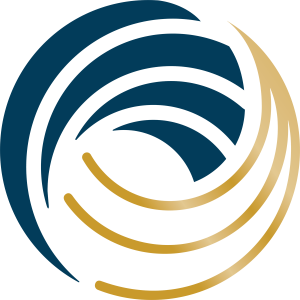Trauma Training Tip

Leaves are turning, the air is crisp. Fall is here.
The Lung and the Colon are organs associated with the Fall and the Metal Element. The spirit of the Lung is called the Poor the Animal Soul. It gives us the capacity to feel animated in our essential animal nature – in our bodies. Cultivating this felt sense is a critical tool for healing the impact of traumatic stress.
The gift of the Fall in the Self Protective Response is to help us “Awaken Arousal” to a sense that “something is amiss” – it’s an embodied knowing. An embodied sense of truth.
We may use needles, touch, breathing exercises, and certainly our respectful presence in our work with the Metal – the Lung and the Colon. We can help someone with a Self Protective Response that remains incomplete in the “Awaken Arousal” phase – and help this trauma survivor find a greater sense of embodied presence.
They may have managed a recurring experience of threat whose first signal was the sound of a stair creaking by freezing or dissociating. Using the freeze response in moments like these was life-saving so many years ago – too much energy was coming in and their circuit breakers needed to switch “off” to keep their energy body from burning to the ground. It was certainly better to “leave” than to experience what was coming next. However – this habituated freeze comes with elevated morbidity and mortality risks and a loss of capacity to be awake to both the dangers and the daisies in our world. Survivors may need help to wake up the collapse in tissues and find a full sense of self and the healing they took birth for (a phrase of Ondrea Levine’s as told to Stephen Levine in her book The Healing I Took Birth For: Practicing the Art of Compassion).
We would be remiss if we left our work with repairing or restoring vitality in the Awaken Arousal phase after threat. Our more important contribution to this survivor is to expand the capacity of the Po to awaken to curiosity about people or places that are new or different. The more we can embody our curiosity for life, the more we live in our parasympathetic system. We are more able to use relational tools to put the brakes on what could turn into an unfortunate and unnecessary mobilization in the face of a sense of threat.
Our most important work is not repairing what got broken in an experience of threat – but building capacity for life in each of the 5 Elements. Greater capacity means greater flexibility in how we engage with our neighbors, with life and with our future.
Alaine’s Two Cents
I’m reading Vulnerable Minds: The Neuropolitics of Divided Societies by Liya Yu, published in 2022.
The author has taught a course called “The Political Brain: Neuropolitical Explanations of Prejudice, Exclusion and Diversity” at the University of Virginia with students across the political spectrum. They benefited from exploring the social dynamics of their opinions through the lens of neuro-science.
So important for figuring out our current life and times. She’s got my attention! Stay tuned for more next month!
Check This Out!
This Pacific Center Podcast episode explores the presentations I will be making at the Pacific Symposium in San Diego, CA.
It will be a hybrid – you can register here to either attend in person – or online.
Here’s a bit about my presentations:
November 6th
- Five Element Applications to Manage Challenging People and Circumstances – a look at the Self Protective Response and the importance of capacity building in the 5 Elements. (1 CEU)
- Five Element Strategies for Trauma Survivors with Complex Multi-System Illness – an exploration of the importance of building core regulation, using the ShenCycle, the K’o Cycle and the concept of allostasis to guide our service. (3 CEUs)
November 7th and 8th
- Post Conference Workshop – Transforming Trauma: Cultivating Capacity in the Kidney/Heart Axis. This experiential workshop will include demos of hands-on in-person and virtual touch work. (14 CEUs for in-person attenders, 10 CEUs for virtual attenders)
Clinical Curiosity
Where is your clinical curiosity carrying you?
Send me a question or two and I will explore them with readers in this corner next month.
Q. I’m a mental health provider – and I’m just getting started with studying somatic approaches with my clients. I’m also working almost exclusively in the virtual world – on Zoom. Do you have advice for me?
A. First off – let me say thank you! So many trauma survivors experienced overwhelming events before they had language – so cognitive, language-based approaches may not reach the places and functions that got disturbed so long ago. Your clients will be so grateful!
I am aware that touch can be controversial in mental health settings – so be sure to talk through the consent process with your client and consult with your board. I believe it is so very critical for survivors of pre-verbal trauma to experience safe and relational touch. Mindful touch will be a very meaningful addition to their work with you, I promise!
One of the “collateral healing” experiences of the pandemic has been cultivating meaningful ways to touch people virtually. Putting your attention, intention, and therapeutic resonance together with their embodied awareness – and sense of resonance with you is quite extraordinary. They will be able to feel your presence – and your touch.
Always ask permission for your contact – even through the screen and watch your client’s affect – are they moving towards more coherence, or into greater dysregulation? Take a look at Chapter 6 in Tao of Trauma for advice on touching the skin as a good place to start. You might also look in Chapter 9 for the “May I touch you” exercise. Let me know how it goes!


